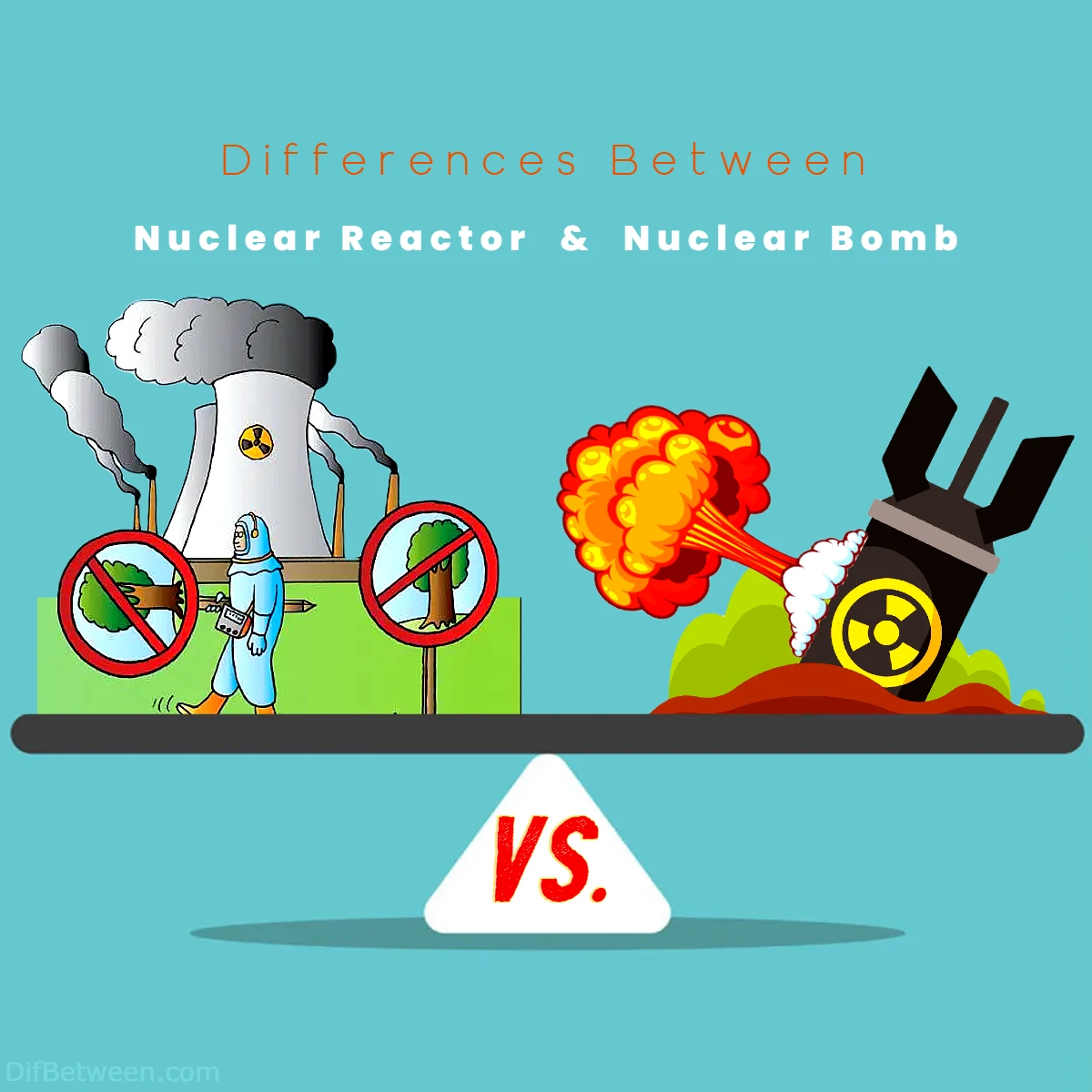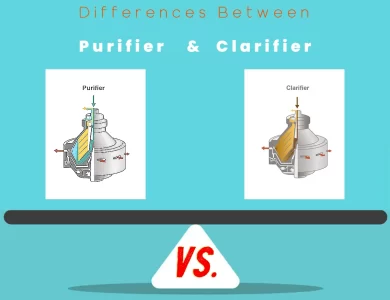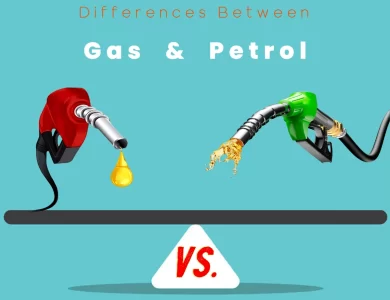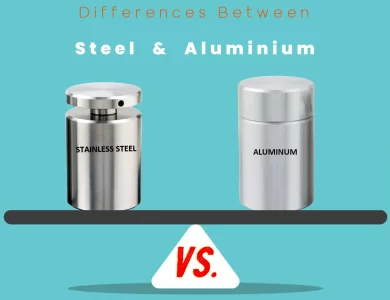
| Category | Nuclear Reactor | Nuclear Bomb |
|---|---|---|
| Purpose and Function | Generates electricity peacefully | Designed for mass destruction |
| Energy Release | Controlled, sustained release | Uncontrolled, instantaneous |
| Containment and Control | Multiple safety layers | No containment, no control |
| Fallout and Radiation | Minimal fallout, contained | Mushroom cloud, widespread radiation |
| International Regulations | Subject to strict regulations | Prohibited under international law |
| Environmental Impact | Minimal greenhouse gases | Severe environmental consequences |
| Use and Deployment | Civilian energy generation | Military weapon deployment |
| Global Stockpiles | Not part of nuclear weapons stockpile | Part of nuclear weapons arsenal |
| Humanitarian Concerns | Focus on safety and welfare | Associated with loss of life and suffering |
| Historical Context | Developed for energy production | Developed for warfare and deterrence |
| Scientific Principles | Controlled nuclear fission | Uncontrolled nuclear fission and fusion |
| Diplomacy and Relations | Engaged in diplomatic efforts | Global security concerns |
| Economic Implications | Contributes to economies | Resource-intensive, economic burden |
| Future Directions | Innovation in safety and efficiency | Disarmament and non-proliferation |
| Environmental Considerations | Low carbon emissions | Environmental damage and contamination |
| Sustainability Goals | Aligns with sustainability goals | Incompatible with sustainability |
| Resource Allocation | Investment in energy infrastructure | Diversion of resources from essential needs |
| Compliance with Treaties | Compliance with international nuclear treaties | Violation of international nuclear treaties |
In this eye-opening exploration, we’ll navigate the profound disparities between two entities that, at first glance, might seem worlds apart: the humble nuclear reactor and the formidable nuclear bomb. These two phenomena are not just distinct but stand as polar opposites in terms of purpose, function, and impact.
Differences Between Nuclear Reactor and Nuclear Bomb
The main differences between a Nuclear Reactor and a Nuclear Bomb lie in their purpose and function. A Nuclear Reactor is designed for peaceful purposes, primarily to generate electricity through controlled nuclear fission. In contrast, a Nuclear Bomb is a destructive weapon, solely intended to release an enormous amount of energy in an uncontrolled explosion. Reactors are subject to strict international regulations, focus on safety, and contribute to sustainable energy, while Nuclear Bombs are prohibited under international law and pose severe humanitarian and environmental risks. Understanding these fundamental distinctions is crucial in grasping the contrasting roles these nuclear technologies play in our world.
1. Purpose and Function
Carbon Nuclear Reactor
Purpose: Carbon nuclear reactors are designed with a single, constructive purpose – to generate electricity. These reactors are part of the global energy infrastructure, providing a substantial portion of the world’s electricity through controlled nuclear reactions. The primary function of a carbon nuclear reactor is to harness the heat generated from nuclear fission to produce steam, which drives turbines and generates electricity. It is a pivotal component in the production of clean and reliable energy, contributing significantly to the reduction of greenhouse gas emissions.
Mechanism: Carbon nuclear reactors operate by controlling the nuclear fission of fissile materials, such as uranium-235 or plutonium-239, within a controlled environment. This controlled chain reaction releases a tremendous amount of heat, which is used to produce steam. The steam, in turn, powers turbines connected to generators, ultimately producing electricity.
Consequences: The consequences of a carbon nuclear reactor are largely positive when operated safely and efficiently. They produce large amounts of electricity with minimal greenhouse gas emissions, making them a crucial component of a clean energy future. However, they do produce radioactive waste, necessitating careful management and disposal.
Nuclear Bomb
Purpose: Nuclear bombs, in stark contrast, are instruments of destruction. Their sole purpose is to release an enormous amount of energy in the form of a nuclear explosion. Nuclear bombs are designed as weapons of mass destruction and have no constructive or productive function. They are created with the intent to cause devastation, death, and widespread destruction.
Mechanism: Nuclear bombs utilize an uncontrolled nuclear chain reaction to produce a catastrophic explosion. This involves rapidly releasing the energy stored in fissile materials, such as highly enriched uranium or plutonium. The result is a powerful blast, accompanied by intense heat, radiation, and a mushroom cloud, causing immense damage.
Consequences: The consequences of a nuclear bomb are overwhelmingly negative and devastating. These weapons have the potential to cause widespread death, destruction of infrastructure, and long-lasting environmental damage. The release of radiation can lead to severe health issues for survivors and contaminate large areas for extended periods.
2. Energy Release
Carbon Nuclear Reactor
Energy Release: Carbon nuclear reactors release energy in a controlled and sustained manner. The energy is primarily in the form of heat, which is used to produce steam for electricity generation. This controlled release of energy allows for the generation of power over an extended period, typically several years, before fuel needs replacement.
Output: The electricity output of a carbon nuclear reactor varies but can be substantial, with some reactors capable of producing thousands of megawatts of electricity. This consistent and high-output energy source is a vital component of many nations’ energy grids.
Nuclear Bomb
Energy Release: Nuclear bombs release an enormous amount of energy in an extremely brief moment. This energy release is uncontrolled and occurs within milliseconds of detonation. The energy is primarily in the form of an explosive shockwave, intense heat, and ionizing radiation.
Output: The energy output of a nuclear bomb is staggering. It can range from the equivalent of several tons of TNT for a small tactical nuclear weapon to hundreds of thousands of tons of TNT for a strategic thermonuclear bomb. The goal is maximum destruction, not sustained energy production.
3. Containment and Control
Carbon Nuclear Reactor
Containment: Carbon nuclear reactors are meticulously designed with multiple layers of containment to prevent uncontrolled releases of radiation or nuclear material. The reactor core is housed within thick layers of concrete and steel, with redundant safety systems in place to maintain control.
Control: Operators of carbon nuclear reactors have the ability to control the nuclear reactions by adjusting control rods and coolant flow. This allows for the management of power output and safety. In the event of an emergency, shutdown systems are in place to cool the reactor and prevent overheating.
Nuclear Bomb
Containment: Nuclear bombs have no containment mechanisms to prevent the release of energy. When they are detonated, all the stored nuclear energy is unleashed in a destructive explosion. The goal is to maximize damage, not to contain the energy.
Control: There is no control over the energy release of a nuclear bomb once it is triggered. It is designed to be an all-or-nothing weapon with no means of stopping or regulating the explosion once initiated.
4. Fallout and Radiation
Carbon Nuclear Reactor
Fallout: Carbon nuclear reactors do not produce the characteristic mushroom cloud associated with nuclear explosions. They do not release a significant amount of fallout, which consists of radioactive debris and dust that can be carried by the wind.
Radiation: While carbon nuclear reactors do produce radiation within the reactor core, the containment systems are designed to prevent the release of this radiation into the environment. Regular maintenance and safety protocols are in place to minimize exposure to radiation for workers and nearby communities.
Nuclear Bomb
Fallout: Nuclear bombs produce a distinctive mushroom cloud, and they release a substantial amount of fallout. This fallout can be carried by winds over long distances, causing contamination far from the blast site.
Radiation: Nuclear bombs release intense radiation in the form of gamma rays, neutron radiation, and alpha and beta particles. This radiation is extremely hazardous to living organisms and can lead to acute radiation sickness and long-term health effects for survivors.
5. International Regulations
Carbon Nuclear Reactor
Regulation: Carbon nuclear reactors are subject to stringent international regulations and oversight by organizations like the International Atomic Energy Agency (IAEA). These regulations cover safety standards, nuclear material management, and non-proliferation measures.
Treaties: Nations that operate carbon nuclear reactors are often signatories to international treaties, such as the Treaty on the Non-Proliferation of Nuclear Weapons (NPT), which commit them to peaceful nuclear use and disarmament.
Nuclear Bomb
Regulation: Nuclear bombs are strictly prohibited under international law, specifically the Treaty on the Non-Proliferation of Nuclear Weapons (NPT). The use, possession, or testing of nuclear bombs is a clear violation of these treaties and is subject to severe international condemnation.
Non-Proliferation: The international community actively works to prevent the proliferation of nuclear weapons and materials. Efforts are made to secure and reduce existing nuclear arsenals to prevent their use.
6. Environmental Impact
Carbon Nuclear Reactor
Environmental Impact: While carbon nuclear reactors are generally considered clean energy sources, they do produce radioactive waste that needs careful management. The long-term storage and disposal of this waste can pose environmental challenges.
Carbon Emissions: Carbon nuclear reactors do not produce carbon dioxide (CO2) emissions during electricity generation, making them a valuable tool in combating climate change.
Nuclear Bomb
Environmental Impact: Nuclear bomb detonations result in severe environmental consequences. The immediate blast and heat can cause fires and damage to ecosystems, and the release of radiation can contaminate large areas, rendering them uninhabitable for extended periods.
Long-Term Effects: The long-term environmental impact of nuclear bombs includes genetic mutations in plants and animals, disruptions to ecosystems, and contamination of soil and water resources.
7. Use and Deployment
Carbon Nuclear Reactor
Use: Carbon nuclear reactors are deployed exclusively for peaceful purposes, primarily to generate electricity for civilian use. They are not intended for use as weapons and are not designed for military applications.
Deployment: Reactors are typically located in dedicated facilities, often at a considerable distance from densely populated areas, and are operated by trained personnel following strict safety protocols.
Nuclear Bomb
Use: Nuclear bombs are designed exclusively for military use and are intended to cause massive destruction. They are considered a last-resort option and are meant to deter aggression by other nations.
Deployment: Nuclear bombs are typically deployed on intercontinental ballistic missiles (ICBMs), strategic bombers, or other delivery systems. Their deployment is highly classified and tightly controlled by military authorities.
8. Global Stockpiles
Carbon Nuclear Reactor
Stockpiles: Carbon nuclear reactors do not contribute to the global stockpiles of nuclear weapons. The fissile materials used in reactors are carefully monitored and subject to strict international regulations to prevent diversion for weapons purposes.
Transparency: Nations with carbon nuclear reactors are generally transparent about their civilian nuclear programs and cooperate with international organizations to ensure the peaceful use of nuclear technology.
Nuclear Bomb
Stockpiles: Nuclear bombs are maintained by several nations around the world, with varying numbers in their arsenals. These stockpiles are a significant global security concern due to the destructive power of these weapons.
Secrecy: The specifics of nuclear weapons stockpiles, including the exact number and locations, are often shrouded in secrecy for security reasons. This lack of transparency can lead to international tensions and concerns.
9. Humanitarian Concerns
Carbon Nuclear Reactor
Humanitarian Concerns: While there are concerns about the safety and long-term waste management of carbon nuclear reactors, they are generally not associated with humanitarian crises or catastrophic events.
Safety Measures: Extensive safety measures, emergency response plans, and international cooperation are in place to minimize the risks associated with carbon nuclear reactors.
Nuclear Bomb
Humanitarian Concerns: The use of nuclear bombs has profound humanitarian implications. The immediate and long-term consequences of nuclear explosions can result in massive loss of life, displacement of populations, and long-lasting health and environmental challenges.
Prevention: International efforts are focused on preventing the use of nuclear bombs and reducing their numbers to mitigate the humanitarian impact of these weapons.
10. Historical Context
Carbon Nuclear Reactor
Historical Context: The development of carbon nuclear reactors is rooted in the mid-20th century and driven by the need for a reliable and efficient source of electricity. It is closely tied to the peaceful use of nuclear energy for civilian applications, including electricity generation, medical isotopes production, and scientific research.
Milestones: Key milestones in the history of carbon nuclear reactors include the construction of the world’s first nuclear power plant, the Shippingport Atomic Power Station in the United States, which began operation in 1958. Since then, numerous reactors have been built worldwide for electricity generation.
Nuclear Bomb
Historical Context: The history of nuclear bombs is deeply intertwined with the development of atomic weapons during World War II. The bombings of Hiroshima and Nagasaki in 1945 marked the first and only use of nuclear weapons in warfare.
Milestones: The development of nuclear bombs saw rapid advancement during the Cold War, with both the United States and the Soviet Union stockpiling large arsenals of these weapons. International efforts to control and reduce the spread of nuclear weapons culminated in various treaties, including the NPT and arms reduction agreements.
11. Scientific Principles
Carbon Nuclear Reactor
Scientific Principles: Carbon nuclear reactors rely on the principles of nuclear fission, where heavy atomic nuclei, such as uranium-235 or plutonium-239, split into smaller fragments, releasing energy. The control of this process allows for the sustained release of energy.
Physics and Engineering: The operation of carbon nuclear reactors requires a deep understanding of nuclear physics and engineering to ensure safe and efficient energy production.
Nuclear Bomb
Scientific Principles: Nuclear bombs also utilize nuclear fission but are designed to maximize the energy release in an uncontrolled manner. They can also incorporate nuclear fusion, where lighter atomic nuclei combine to release even more energy, in the case of thermonuclear or hydrogen bombs.
Advanced Physics: The design and construction of nuclear bombs are highly classified, and they involve advanced physics, engineering, and materials science.
12. Diplomacy and International Relations
Carbon Nuclear Reactor
Diplomacy: Nations with carbon nuclear reactors often engage in diplomatic efforts to promote the peaceful use of nuclear energy, cooperate on safety measures, and address concerns related to nuclear proliferation.
International Cooperation: Many international agreements, such as the Paris Agreement on climate change, recognize the importance of nuclear energy as a low-carbon energy source and encourage cooperation in its development.
Nuclear Bomb
Diplomacy: Diplomatic efforts surrounding nuclear bombs primarily focus on disarmament, non-proliferation, and preventing the spread of these weapons to additional countries.
Treaties: The NPT is a pivotal international treaty aimed at preventing the spread of nuclear weapons and promoting disarmament among the countries that possess them.
13. Economic Implications
Carbon Nuclear Reactor
Economic Contribution: Carbon nuclear reactors contribute significantly to the economies of countries with nuclear energy programs. They provide stable and reliable sources of electricity, create jobs in the nuclear industry, and reduce dependence on fossil fuels.
Investment: The construction and maintenance of nuclear reactors involve substantial investments in infrastructure and technology. These investments have long-term economic impacts.
Nuclear Bomb
Economic Burden: Nuclear weapons programs are costly to develop, maintain, and secure. These programs divert resources away from other essential priorities, such as healthcare, education, and infrastructure.
Global Security: The economic burden of nuclear weapons programs contributes to global security concerns, as it can strain the resources of countries involved.
14. Future Directions
Carbon Nuclear Reactor
Future Innovation: The future of carbon nuclear reactors includes innovations in reactor design, safety, and waste management. Advanced reactor technologies, such as molten salt reactors and small modular reactors, are being explored for greater efficiency and safety.
Climate Change Mitigation: Carbon nuclear reactors are poised to play a crucial role in global efforts to mitigate climate change by providing reliable, low-carbon electricity.
Nuclear Bomb
Disarmament: The international community continues to strive for nuclear disarmament and reducing the global stockpile of nuclear weapons to prevent their use and associated risks.
Non-Proliferation: Preventing the spread of nuclear weapons technology and materials remains a top priority to prevent the proliferation of these destructive weapons.
FAQs
The primary purpose of a Nuclear Reactor is to generate electricity for civilian use in a controlled and sustainable manner through nuclear fission.
The primary purpose of a Nuclear Bomb is to cause mass destruction and devastation through an uncontrolled release of nuclear energy.
A Nuclear Reactor releases energy in a controlled and sustained manner, producing electricity. In contrast, a Nuclear Bomb releases an enormous amount of energy in an uncontrolled explosion.
Nuclear Reactors are equipped with multiple safety layers, containment systems, and emergency shutdown mechanisms to prevent uncontrolled releases of radiation.
Nuclear Reactors are subject to strict international regulations and are part of efforts to promote peaceful nuclear technology. Nuclear Bombs are prohibited under international law.
Nuclear Reactors, while producing radioactive waste, do not emit greenhouse gases, making them a low-carbon energy source. Nuclear Bombs result in severe environmental damage and contamination.
Nuclear Reactors are used for peaceful energy generation, while Nuclear Bombs are deployed as military weapons for destructive purposes.
The future of Nuclear Reactors involves innovation in safety and efficiency, while international efforts focus on disarmament and non-proliferation of Nuclear Bombs.
Nuclear Reactors focus on safety and welfare, while Nuclear Bombs are associated with loss of life, suffering, and long-term health and environmental effects.
Nuclear Reactors were developed for peaceful energy production, whereas Nuclear Bombs have a historical context rooted in warfare and deterrence during World War II and the Cold War.
Read More:
Contents
- Differences Between Nuclear Reactor and Nuclear Bomb
- 1. Purpose and Function
- 2. Energy Release
- 3. Containment and Control
- 4. Fallout and Radiation
- 5. International Regulations
- 6. Environmental Impact
- 7. Use and Deployment
- 8. Global Stockpiles
- 9. Humanitarian Concerns
- 10. Historical Context
- 11. Scientific Principles
- 12. Diplomacy and International Relations
- 13. Economic Implications
- 14. Future Directions
- FAQs






